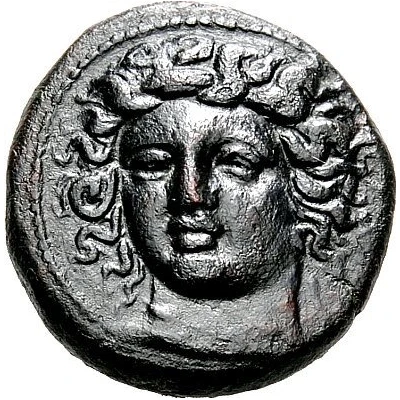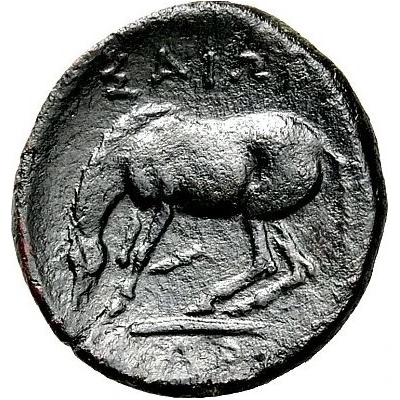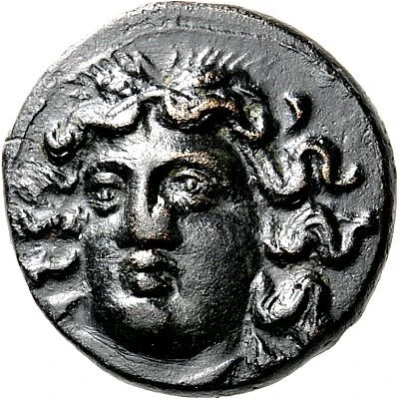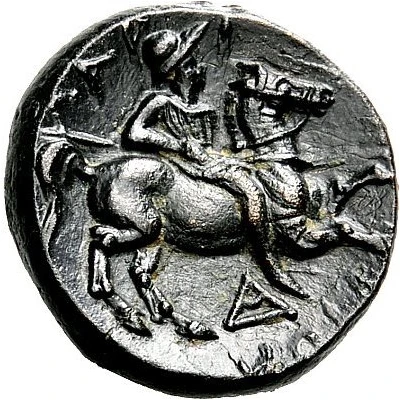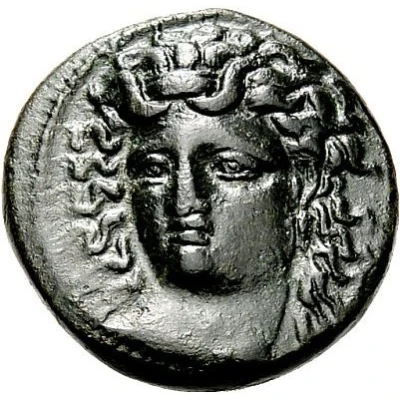
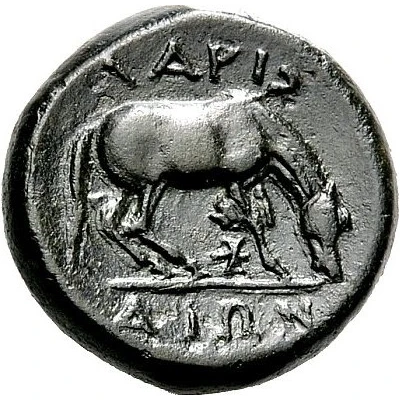

© Nomos AG
Dichalkon 400 BC - 350 BC
| Bronze | 4.34 g | 16.0 mm |
| Issuer | Larissa (Thessaly) |
|---|---|
| Type | Standard circulation coin |
| Years | 400 BC - 350 BC |
| Value | Dichalkon (1⁄24) |
| Currency | Drachm |
| Composition | Bronze |
| Weight | 4.34 g |
| Diameter | 16.0 mm |
| Shape | Round (irregular) |
| Technique | Hammered |
| Demonetized | Yes |
| Updated | 2024-10-10 |
| Numista | N#171102 |
|---|---|
| Rarity index | 90% |
Reverse
Horse crouching to right, preparing to roll; with double-headed ax below horse.
Script: Greek
Lettering: ΛΑΡΙΣ ΑΙΩΝ
Interesting fact
The Dichalkon coin from Larissa (Thessaly) is interesting because it features a unique design, with two horsemen riding on opposite sides of the coin, with their heads turned towards each other, creating a sense of movement and dynamism. This design was a departure from the more traditional designs found on ancient Greek coins, which often featured a single figure or a static scene. The use of two horsemen may have been intended to symbolize the importance of horse breeding and trading in the region, or to represent the dual nature of the goddess Hera, who was worshipped in Larissa and was associated with fertility, marriage, and childbirth. The coin's design and symbolism offer a fascinating glimpse into the culture and beliefs of ancient Thessaly.
